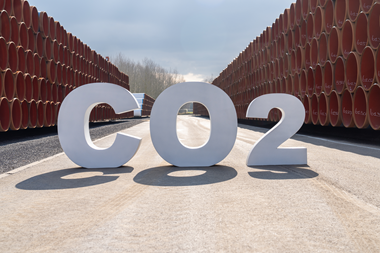
CO₂, the challenge to address
What is CO₂?
CO₂, or carbon dioxide, plays a major role in climate change. While essential to life on Earth, acting like a thermostat that keeps our planet warm, excessive CO₂ can overheat our planet.
A natural gas, now out of balance
CO₂ has always been part of our atmosphere, helping plants grow and sustaining life. But since the industrial revolution, human activity has increased CO₂ levels by 51%, pushing our climate out of balance. That’s why the energy transition is urgent; to drastically reduce emissions.

What is industry doing to cut CO₂ emissions?
In Europe, industry accounts for approximately 20% of emissions. Companies are improving energy efficiency, electrifying processes, and switching to hydrogen where possible. But not all emissions can be avoided. This is where CO₂ capture, storage, and reuse (CCUS) comes in.
What is CCUS?
CCUS captures CO₂ from industrial processes and either stores it underground or reuses it. This helps reduce emissions and avoid high costs from the EU’s Emissions Trading System, which makes emitting CO₂ increasingly expensive.
Our role in the energy transition
At Fluxys, we are building the infrastructure to support this shift. Our ambition can be expressed in three numbers: 30x30x30s. In the 2030s, we aim to:
- Transport 30 million tonnes of CO₂; equal to removing 13 million cars from the road.
- Deliver 30 TWh of hydrogen; over a third of Belgium’s electricity use.
CO₂ transport and storage
As we transition to a new energy future, how we produce and use energy is evolving — and so is our approach to greenhouse gases. At Fluxys, building on our extensive and interconnected natural gas network, we are evolving towards a multi-molecule infrastructure that will also carry CO₂ and hydrogen.
Building a future-ready network
We’re developing infrastructure to transport, store, and reuse captured CO₂, supporting a climate-neutral economy. With terminal projects underway in Zeebrugge, Dunkerque, and Antwerp, Fluxys will play a pivotal role in the European vision, serving as strategic hubs for CO₂ export and transit. Through coordinated development with our partners, we also aim to establish a robust and scalable CO₂ backbone that supports industrial decarbonisation.
Our partnerships in Norway and other strategic CO₂ storage sites are helping to secure long-term carbon capture and storage solutions, reinforcing Europe’s commitment to a low-carbon future.
In parallel, we are also forging international partnerships to build a cost-effective hydrogen value chain, collaborating with Chile and Oman to establish hydrogen production and global supply routes.
This transformation positions Fluxys and its affiliates as key enablers of cross-border transport and exchange of molecules vital to decarbonisation.

Our CO2 infrastructure projects
We are working on all kinds of initiatives and collaborations to develop our CO2 infrastructure. We are building new pipelines underground (onshore) and under the sea (offshore) and building terminals that temporarily store CO2 and load it onto ships for transport to permanent storage sites. We are also investing in projects to enable the reuse of CO2.
With decades of experience in pipeline infrastructure and a strategic location in Europe, Fluxys is uniquely positioned to support your decarbonisation process, from capture to storage or reuse.
What is the decarbonisation potential for my business?
You and your company want to reduce your emissions, but where do you start? What steps should you take? Our experts are here to help you navigate the challenges of the energy transition. Together, we will explore the opportunities for your business and integrate your input into our infrastructure planning. Your insights help us refine our infrastructure map to better support your decarbonisation journey.
- Questions about hydrogen or carbon?
- Do not hesitate to reach out to:
